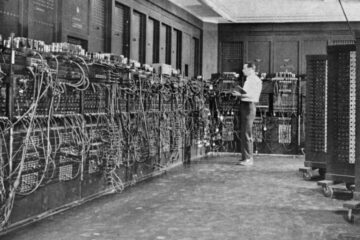 Thomas Edison, War of Currents, Lighting and Electricity in the U.S. Beginning in the Late 1800s
Thomas Edison, War of Currents, Lighting and Electricity in the U.S. Beginning in the Late 1800s
The history of electricity in America during the 1800s, from the time of Thomas Edison’s contributions to the early 1900s, is a period of remarkable innovation and development. Here is an overview of key events and milestones during this era:
Thomas Edison’s Incandescent Light Bulb (1879):
Thomas Edison and his team successfully developed a practical incandescent light bulb in 1879. This invention marked a significant advancement in electric lighting technology, making it feasible for widespread use. Edison’s incandescent bulbs replaced less efficient gas lamps and candles, revolutionizing illumination.
Edison’s Pearl Street Power Station (1882):
To demonstrate the viability of electric lighting on a large scale, Edison opened the Pearl Street Power Station in New York City in 1882. It was the world’s first commercial central electric power plant, supplying electricity to homes and businesses in a concentrated area. This marked the beginning of commercial electricity generation and distribution in the United States.
Edison’s Promotion of Direct Current (DC) Systems:
Edison and his company, Edison Electric Light Company, initially focused on direct current (DC) electrical systems. DC systems delivered electricity in a continuous flow in one direction and were used in many early urban electrical networks.
Nikola Tesla, a Visionary Inventor and Engineer:
He was born on July 10, 1856, in Smiljan, Croatia, which was then part of the Austrian Empire. In 1884, he immigrated to the United States, where he would make many of his groundbreaking contributions to science and technology. Tesla patented his alternating current (AC) motor and transformer system in the late 1880s, which revolutionized the generation and distribution of electricity. One of his most significant achievements was the development of the Tesla coil in the 1890s, used in wireless communication and high-frequency research.
The “War of Currents”:
Edison’s DC system faced competition from alternating current (AC) systems promoted by George Westinghouse and Nikola Tesla. AC had the advantage of being more efficient for long-distance transmission, making it a preferred choice for large-scale power distribution. The rivalry between DC and AC, known as the “War of Currents,” intensified during the late 1880s and early 1890s.
Adoption of Alternating Current (AC):
AC technology gained dominance due to its ability to transmit electricity over longer distances with less power loss. AC systems were adopted for most power distribution networks, leading to the establishment of large-scale power plants and electrical grids.
Growth of Electrical Utilities:
The success of AC systems led to the formation of electrical utility companies, including Westinghouse Electric, which played a crucial role in generating and distributing electricity to communities across America. This expansion facilitated the electrification of homes, factories, and industries.
Regulation and Standardization:
The growth of the electrical industry prompted the establishment of regulatory bodies such as the Federal Power Commission (later the Federal Energy Regulatory Commission, FERC) to oversee the electric utility sector and ensure safety and standardized practices.
Advancements in Electrical Technology:
The late 19th and early 20th centuries saw continuous advancements in electrical technology, including the development of electric motors, generators, transformers, and transmission lines. These innovations contributed to the widespread adoption of electricity for various applications, from industrial machinery to residential appliances.
Expansion of Electrification (Late 1800s – Early 1900s):
As the electrical grid expanded, more communities were electrified, leading to significant improvements in quality of life and industrial productivity. Electric power played a crucial role in driving technological progress during this period.
Rural Electrification (Late 1930s onwards):
While your requested time frame ends in 1910, it’s worth noting that the electrification of rural areas in the United States became a significant initiative starting in the late 1930s. The Rural Electrification Administration (REA) was established to provide federal loans and support to extend electrical service to rural communities, improving the standard of living for millions of Americans.
In summary, the late 1800s in America were marked by Thomas Edison’s pioneering work on electric lighting and the emergence of electrical power generation and distribution systems. The “War of Currents” ultimately led to the adoption of alternating current (AC) technology, which paved the way for the widespread electrification of the United States and the development of the modern electrical grid.
MORE:
Detailed History of Westinghouse Electric Corporation »
Detailed History of “War of the Currents” »
Timeline of Lighting Technology »
Main Image Source: Wikimedia Commons | New York Street Light Image: Wikimedia Commons
Content sources: Original | Generative AI | Wikipedia
